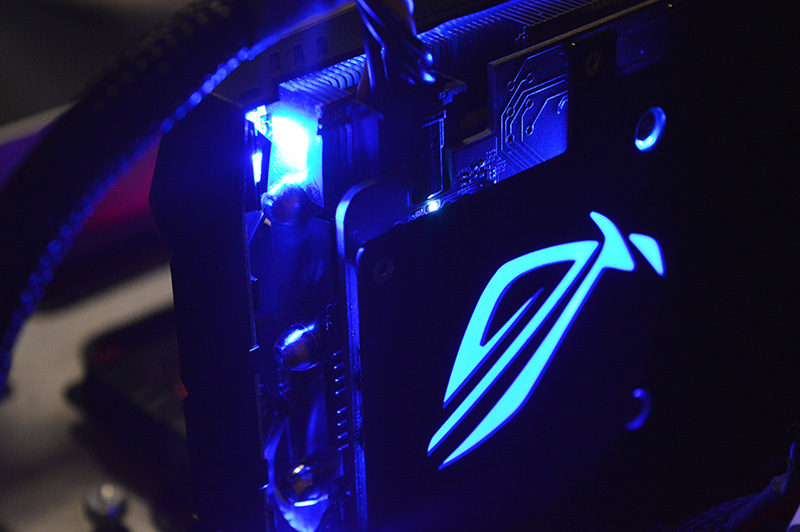ASUS STRIX GAMING RX 480 OC Graphics Card Review
John Williamson / 8 years ago
A Closer Look
Aesthetically-speaking, the ASUS STRIX GAMING RX 480 OC is practically indistinguishable from the company’s other offerings sporting the same cooling hardware. This is a positive concept because the product opts for a neutral design and adds more flamboyant colours through customisable RGB effects. Subsequently, each buyer can modify the GPU’s appearance to their individual taste and choose between flamboyant lighting or a more subtle theme. Honestly, this is the perfect solution and makes the GPU a suitable choice for a wide range of builds.
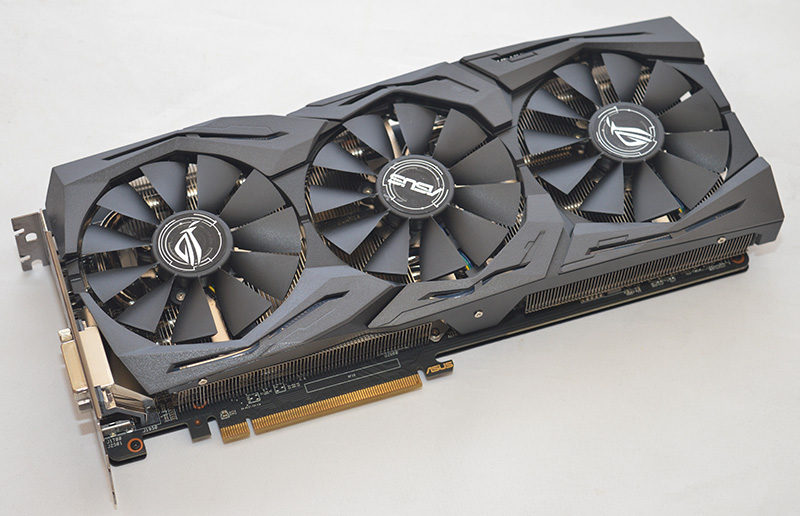
Despite the sub-£300 price point, ASUS didn’t make any concessions when it comes to build quality and incorporated a thick, sturdy backplate. This reinforces the GPU’s weight and prevents drooping while making the product feel more solid. Also, the backplate has a stunning ROG logo which cycles through the full-colour spectrum and looks stunning. Furthermore, the STRIX branding isn’t overpowering and the unusual drawings greatly enhance the product’s unique styling.
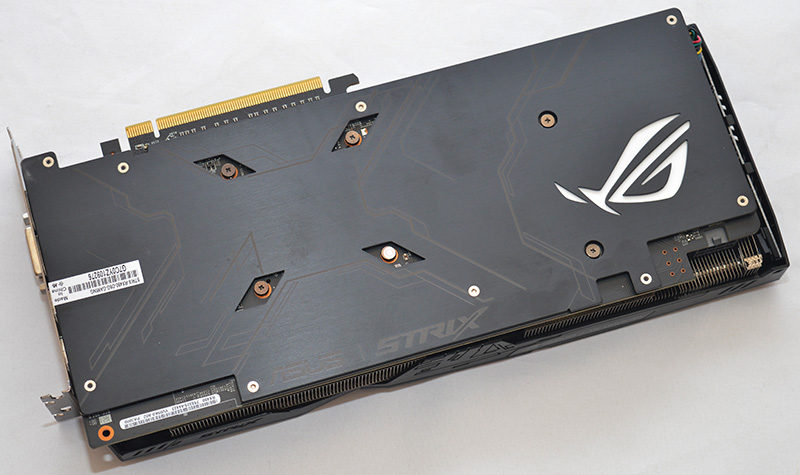
ASUS has deployed their 6-phase Super Allow Power II which consists of quieter chokes, capacitors with a lifespan over 90,000 hours longer than traditional alternatives and 20% cooler DrMOS. The concrete alloy chokes are less prone to buzzing and the DrMOS increases power efficiency while operating at a lower thermal output. The Conductive Polymer Tantalum Solid Capacitor (POSCAP) is positioned towards the back section and aids overclocking headroom. Apparently, the new circuit design is 50% cooler than its predecessor. It’s important to remember that ASUS’ production line is completely automated which removes the human element and undergoes stringent quality control. This should maximise reliability and make hardware failure a rare occurrence.
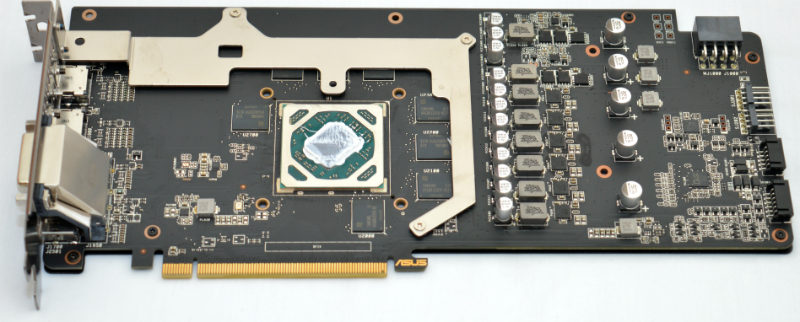
The DirectCU III system revolves around five heat pipes and a dense aluminium fin array. Four of the heat pipes make direct contact with the GPU’s core to effectively transfer heat alongside the triple Wing-Blade patented fans. There’s also a thick thermal pad which cools the VRMs in a proficient way.

ASUS’ fans utilise an innovative blade design with a greater surface area between each blade and pointed edges. As a result, the fans benefit from 105% more static pressure and finds a suitable balance between temperatures and the noise output. Essentially, the cooling hardware is astonishing and a major step up compared to AMD’s reference blower-style cooler.
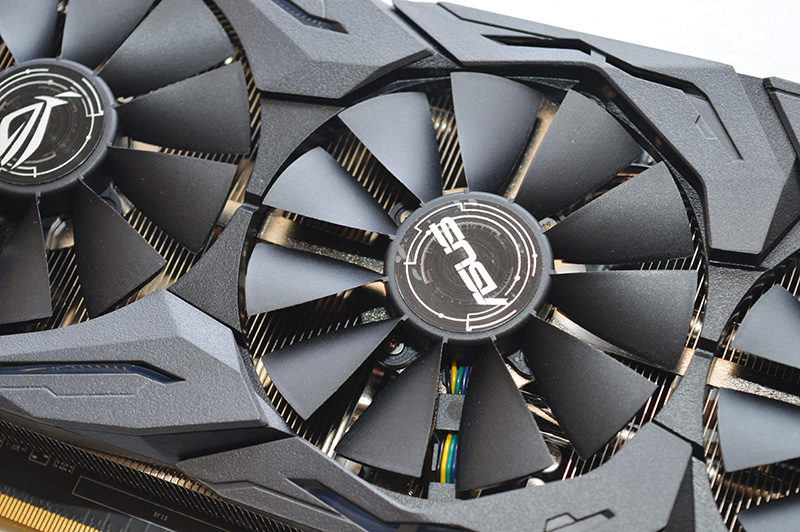
Interestingly, the graphics card houses two 4-pin fan headers which can be deployed to make more effective use of chassis fans. Instead of additional case fans focusing on CPU thermal loads, they can be targeted towards the graphics card. This makes sense when you consider the GPU temperatures are higher unless an aggressive CPU overclock has been applied. Even though the graphics card’s cooling hardware is ample, the two four pin connectors offer great flexibility. I personally wouldn’t use them due to the cabling being quite visible.
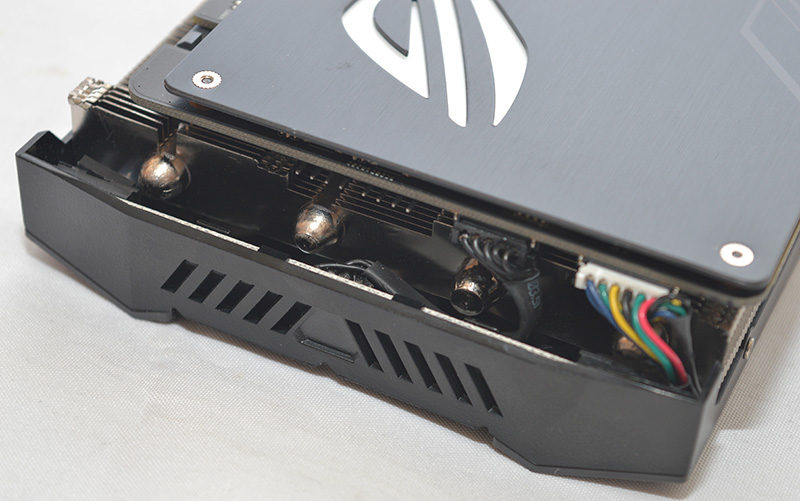
As expected, the graphics card requires a single 8-pin PCI-E connector which can contend with a substantial overclock and prevent power restrictions from inhibiting the performance. From this image, we can see the voltage readout points, designed for professional overclockers.
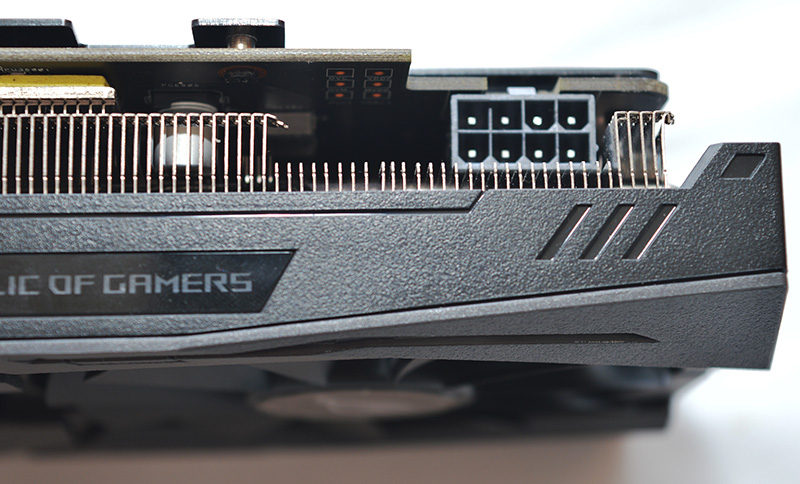
Connectivity-wise, the ASUS STRIX GAMING RX 480 OC has a dual-link DVI-D, two HDMI 2.0b and two DisplayPort 1.4. The two HDMI layout takes VR usage into consideration and makes it simple to connect an external display and VR equipment.
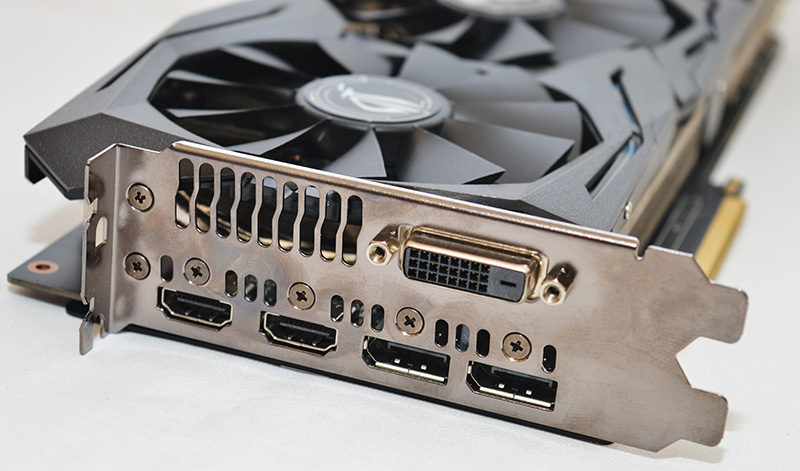
Once powered on, the intricate cut-outs around the cooling shroud are filled in by the product’s spectacular lighting. The colours are extremely vivid and drastically alter an entire build’s appearance. Rather impressively, you can select your favourite static colour or choose between breathing, strobing, colour cycle and other special effects. Not only that, it’s possible to customise the lighting to match a music track’s rhythm and even use the RGB system to monitor GPU temperatures.
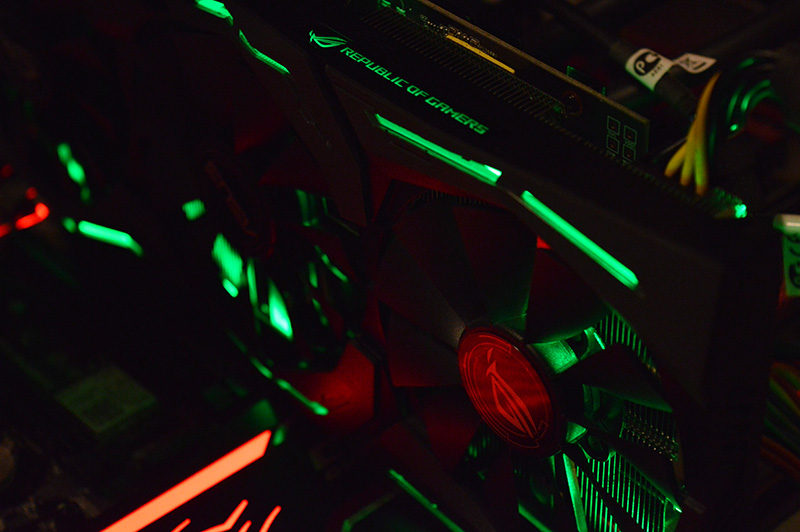
The backplate’s ROG logo emanates light in a beautiful manner and contributes towards a more distinctive aesthetic. Honestly, I was surprised ASUS included this kind of lighting on the backplate because they decided to omit it from the GTX 1060 model.
